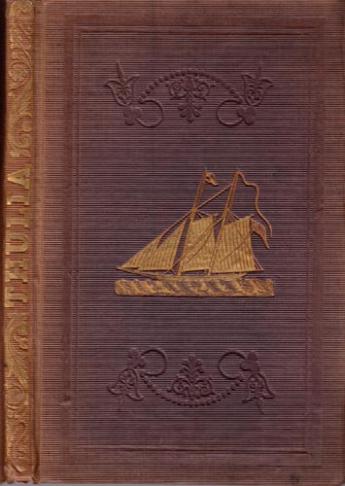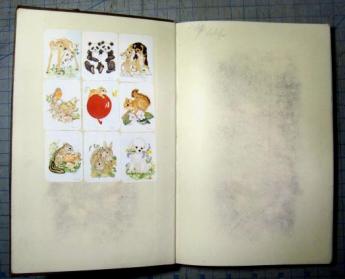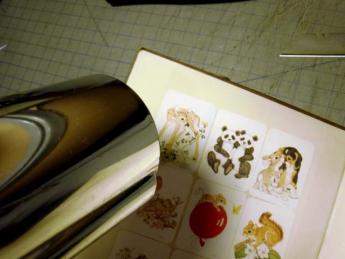Antiquarian Booksellers' Association of America Ten Pound Island Book Company
You Can Quote Me On That

By Greg Gibson
Got home from last week’s road trip in a fairly depleted state. I’d spent seven days banging around New England and I came back with a pocket full of traveling expenses, a head cold, and just a few interesting books to show for it. Worse still, the Ten Pound Island Book Co. check-book looked like it had been on a hunger strike and my receivables were spiraling down toward zero. As we try to impress upon the students at CABS (Colorado Antiquarian Book Seminar) it’s all about cash flow at the end of the day. And my day was almost over. What to do?
Dan Gregory gave a wonderful presentation at the “New Tools” gathering in Dartmouth (see last week’s blog) about using his computer to create special subject catalogs. He searches his keywords and other fields, does a little judicious editing, adds the photos (already accompanying each book), runs the info through a template and prints it out on his company’s giant printer/binder. Presto! A “real” catalog tailored for a very few customers - perhaps those who like dogs or golf or southern authors. Or even just for one very special person. Wouldn’t it be a thrill to get a catalog made especially for you?
This is all well and good when you own 350,000 books, but what do you do when your stock in trade is 1/500th that amount?
The same thing.
Except my catalogs are shorter, each consisting a single item, and they are even more “special” since they only go to one person each – with photographs, but digitally. They are called “quotes” and they’re what little guys like me – specialist dealers – do instead of accumulating 350,000 books and hiring a prodigy like Dan Gregory to sell them. I suspect the act of “quoting” books has been around since 1455. In the old days we used carrier pigeons. Later, we graduated to postcards.
Kevin Johnson of Royal Books is a terrific bookseller. He makes the point that people actually like being contacted by dealers, especially if we’re offering material that stimulates their interest. He prefers telephone, but I’m too shy. I use email instead. Still, it amounts to the same thing – we put the book in the person’s hand and say, “Look at this! Isn’t it cool? I’m really excited about it.”
Yesterday I quoted a rare chart to a chart collector, a yachting thing to a yachting guy, a photograph to a photograph guy, and closed the deal on a naval journal I’d recently quoted to a naval journal guy. All good. A week’s worth of receivables. While I’m waiting for those to come in I’ll go to the bank and deposit checks that came in from earlier quotes.
Yeah, I’m bragging. But bear with me. In order to do what Dan Gregory does, or even what I do, you need two things – books and customers. Everyone is always carrying on about the “books” part. How they bought this book, or how outrageous the price on that book was. But few people pay as much obsessive attention to the other term in the basic equation of our trade: books + customers = $$
I love my books, sure. But my most valuable possession, the most precious asset my company owns, is my mailing list. I’ve been working on it since 1976, and it has graduated from index cards in a shoe box to bits in a digital database.
That’s why I’m out there doing all those penny-ante book fairs, taking those seemingly pointless road trips, attending those seminars and book events, going to lunches I’d rather skip and taking care to medicate my inner sociopath every day. With even more attention and dedication than I put into my search for rare books, I’m looking for customers.
And I’m not just talking about rich guys in Upper East Side penthouses or special collections librarians high in their ivory towers. Through the years some of my best customers have been other dealers, and the only way I learned that was by hanging out with them - “You’ve got a customer for missionary imprints? No fooling! I think I have a book for you…”
OK, I’m climbing down off my pulpit now to show you something cool I learned from Terry Belanger two years ago at CABS.
We were all a little put off when he showed up with a hair dryer, especially since it was a device for which he apparently had little need. But boy, were we wrong! It turned out we all needed one, because a simple hair dryer is the safest and most effective method for removing things pasted into books.
For example, my otherwise lovely copy of Thulia was marred by kiddy stickers that some moron had allowed to be stuck onto the book’s front pastedown. Yukk!
A few minutes with Dr. Bellanger’s mighty hot air machine took care of that. And a little cleanup removed every trace of old adhesive, leaving only the original acid burn from the binding glue.
Terry, you’re a Genius! (He actually has a MacArthur genius grant, but not for hair dryers.)
Palmer, J.C. THULIA: A TALE OF THE ANTARCTIC. NY. 1843. b/w frontis, plates, vignettes. 72 pp. One of the curiosities produced by the Wilkes Expedition, Thulia is, according to Rosove, “the earliest published Antarctic poetry.” It consists of two long narrative poems describing two years’ adventures aboard the schooners Flying Fish and Peacock, as they sailed Antarctic waters with the US Exploring Expedition. The poem is followed by notes and a prose summary of the ship’s adventures, which is the true meat of the book. According to the preface, the text is based on the journals Palmer kept when he served as surgeon aboard the Flying Fish.
The twelve attractive engravings are by A.T. Agate, one of the artists on the Expedition, and there is even music written by James Dana, geologist on the Expedition. According to Rosove the Flying Fish achieved the highest latitude of any ship during the Expedition. He also notes that the book is “scarce.” Rosove 246. Haskell 186. Spence 890. (The book also receives extensive treatment in William E. Lenz’s “The Poetics of the Antarctic.”) This copy is bound in original plum cloth with the gilt image of the Flying Fish still bright on the cover. Owner’s signature on title page. Spine sunned, pastedowns and endpapers show typical darkening from binding materials. A very nice copy of a book that is usually found in poor condition. $2000
The article was published on The Bookman’s Log and is presented here by permission of the author.



